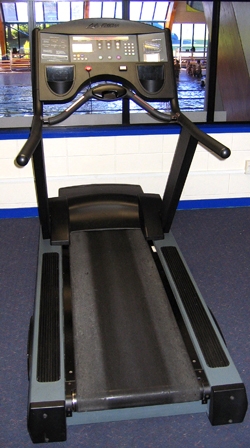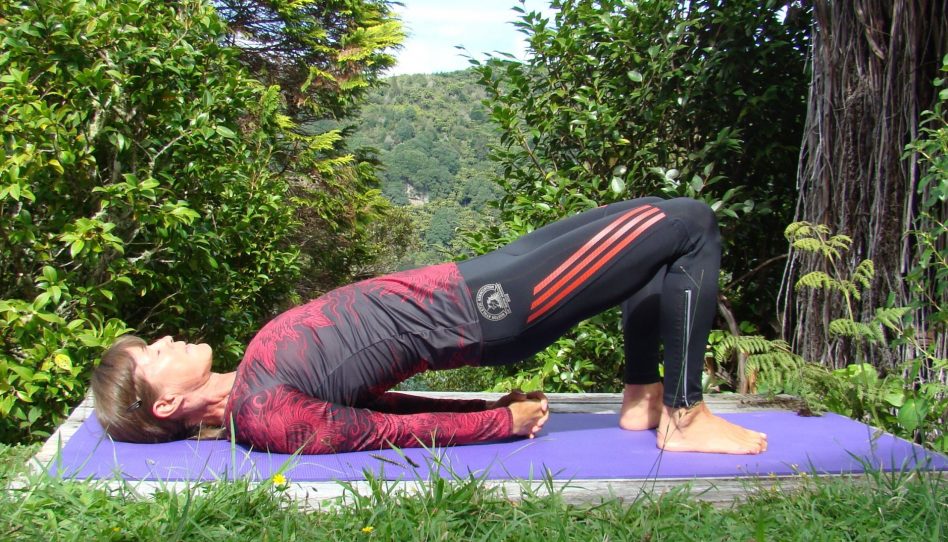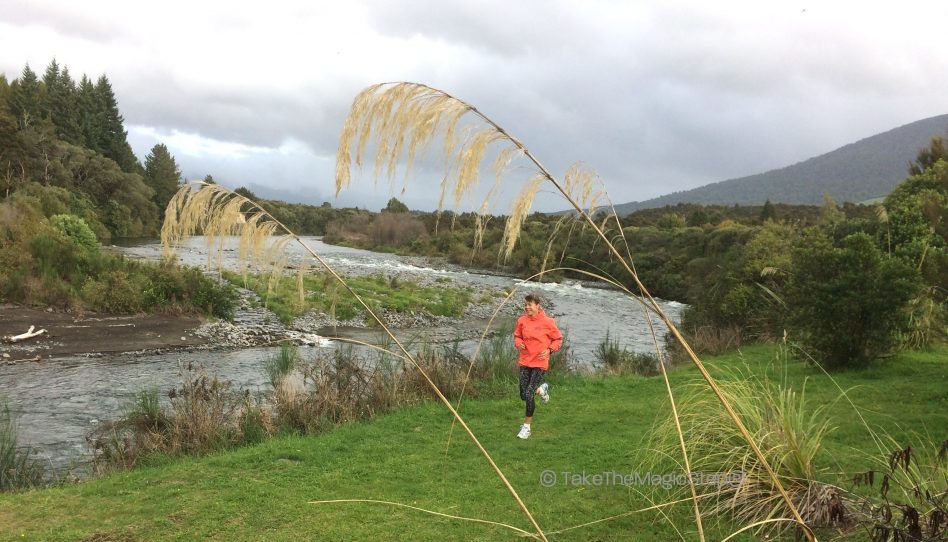The Treadmill: An Effective Retreat From Cold and Snowy Days
Dear Friends,

As I discussed in one of my previous message, you can always stay on track to better fitness and good running when it is wintry outside by using cross-training, like swimming or deep-water running, or biking. But when you are preparing for a Spring marathon, treadmill training can simply be the best option on very cold and snowy days and during the dark winter morning or evening hours. Let us check a few key points about treadmill training and I hope I can answer some questions you might have about “running on the belt.”
One of my friends, a runner himself, has called it “Running on the Dreadmill”—but this feeling can easily be avoided! How? You can find some advice about it in the article “Taming the Treadmill,” which is included in the section “Training & Exercise” on our Take The Magic Step Website.
When you read it, you will find the exercise, “Partner Running,” which is explained towards the end of the article. That is actually one to avoid 🙂 because you need your own complete workouts for your marathon preparation. But seriously, here are some of the main points I would like to stress from the article.
First: Check the first two parts: “When to Run on a Treadmill” and “Good Treadmill Workouts.” Also, there are differing opinions of how much to incline the belt for a baseline. I believe an incline setting of only 0.5 percent simulates outside conditions best. But other runners tell me they prefer a 1 percent incline. Decide what feels best for you and go with your own judgment. And if you like, check the article on how I determined the proper setting.
Second: There are some important safety aspects of treadmill running. Before you start, make sure the belt—the moving tread on which you run—operates smoothly. Step on the belt when the speed is still very slow and you can walk comfortably, then gradually turn up the speed and start running slowly. Now it is OK to go faster until you achieve the desired pace for your workout.
Third: Please make sure you allow enough time for your body to adjust to treadmill running. If at all possible, I would start with only one or two short runs a week. This way you will help your muscles, tendons, and your running biomechanics adjust to the movement of the belt in a manner which helps you avoid injury. Later you may add more and longer runs.
Fourth: Whether you have to run on the treadmill or you simply enjoy doing it, I hope you can still do all of your long runs outside. It is best that you limit your training on the treadmill to less than half of your weekly mileage. Outdoor running is still the most effective training. Please, also see the next point.
Fifth: The Boston Marathon—like most of the others—is a road course. This means you will run the entire distance on a much harder surface than the relatively soft surface of the belt of a treadmill. So please try to run as many of your workouts as possible on the road during the last three to four weeks before the marathon so you have enough time to adjust to the road surface conditions you will face on your “Big Marathon Day.”
And finally: When I prepared for the Boston Marathon in the mid-1990’s, I was training a lot in the Colorado winter. Whenever I could, I ran outside to learn how to cope with the conditions that I might face in Boston—wind, cold or occasionally even warm temperatures. But unfortunately, as many of you know only too well, sometimes the conditions outdoors are simply too harsh in winter. And, instead of missing a training session, running on the treadmill can save your workout and ultimately reward you with the same good feeling you have after a satisfying run outside.
I hope some of this information will be helpful for your training “on the belt.” If you need additional advice on tailoring treadmill workouts to your specific training, please get back to me via Facebook.
I wish you good luck for your fitness and training. And I send you happy New Year wishes again.
Keep running,

Updated January 3, 2014
- Posted January 7, 2013
© Copyright 2013-2024 by Uta Pippig. All Rights Reserved.
More Insights

A Hilly Topic: The Boston Marathon Course
The most effective approach for tackling the Boston Marathon course is to stay relaxed within your own unique stride and cadence. The frequent alternation of uphill, downhill, and flat sections will tempt you to break from your pre-race strategy, but stay with your plan.
Uta’s Favorite Exercises to Improve Your Fitness and Running Technique
Uta Pippig has designed an at-home fitness program which only uses your own body weight, steps, and a Theraband. They are eight exercises that Uta often does herself.
Uta’s Yoga and Stabilization Guide for a Better Running Technique
Runners, especially, can benefit from a well-balanced yoga and stabilization program. Uta suggests effective combinations of poses and exercises that have helped her gain the flexibility and balance that can lead to a better running technique for everyone.
How a Clever Mental Focus Can Get You Through Running Injuries
Running injuries can be devastating, but learning to focus mentally can speed up the healing process. Uta explains how the forced break from running can actually provide future benefits.